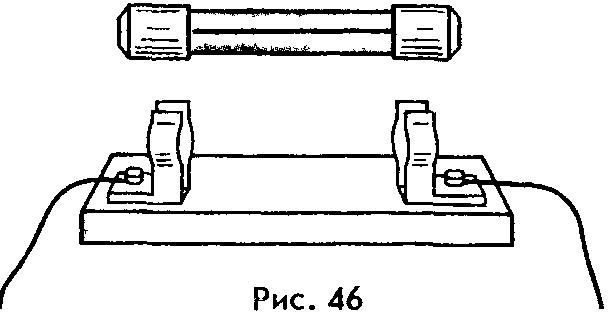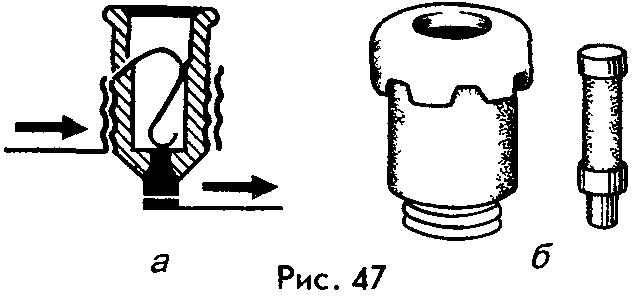>>Physics and Astronomy >>Physics grade 9 >>Physics: Thermal effect of current
When an electric current passes through a conductor, the conductor heats up. This phenomenon was discovered in 1800 by the French scientist Antoine Fourcroix. By passing a current through an iron coil, he managed to heat it up to a very high temperature. After 41 years, the English physicist J. Joule became interested in the thermal effect of the current, and a year later the Russian scientist E. X. Land. They found that:
The amount of heat released by a conductor with current is equal to the product of the square of the current strength, the resistance of the conductor and the time it takes the current to pass through it.
Now this law is called Joule-Lenz law. Mathematically, it is expressed as the following formula:
The current heating of the conductor is due to the interaction of current carriers with oncoming atoms or ions of the substance. As a result of this interaction, the internal energy of the conductor increases and it heats up. The heated conductor gives the received energy to the environment. This energy is the amount of heat, which is determined by the Joule-Lenz law.
The Joule-Lenz law was discovered experimentally. But it can be given a theoretical justification.
When an electric current passes through a conductor, work is done, determined by the expression (18.2): A=IU/t. But U=IR. So
![]()
If the conductor through which the current flows remains motionless and no chemical reactions occur in it, then all this work goes to increase its internal energy. In this case, the amount of heat released by the current-carrying conductor coincides with the work of the current and is therefore determined by the same expression.
With a very large current, a metal conductor can become hot and burn out (melt). This action is based fuses. Their purpose is to automatically turn off the electrical circuit when a current exceeds the allowable flow in it. The symbol for the fuse is given in table 2 (see § 9).
Figure 46 shows a fuse used in electronic equipment. Its main part is a low-melting metal wire (for example, lead), the thickness of which is designed for a certain current (0.5 A, 1 A, 2 A, etc.). If the current strength for one reason or another (for example, during a short circuit) exceeds the permissible value, the wire will melt and the circuit will be open.

Wiring in residential buildings is designed, as a rule, for 6 A or 10 A. The apartment fuses (plugs) used to protect it are shown in Figure 47, a, b. In the first case (see Fig. 47, a), after the thread burns out, the entire cork is replaced, in the second case (see Fig. 47, b) only its fusible insert.

???
1. Why does the conductor through which the current flows heat up?
2. Formulate the Joule-Lenz law.
3. What is the purpose of fuses?
4. Tell us about the device and the principle of operation of fuses. How are they indicated on the diagrams?
5. List the devices you know that use the thermal effect of current.
S.V. Gromov, I.A. Motherland, Physics Grade 9
